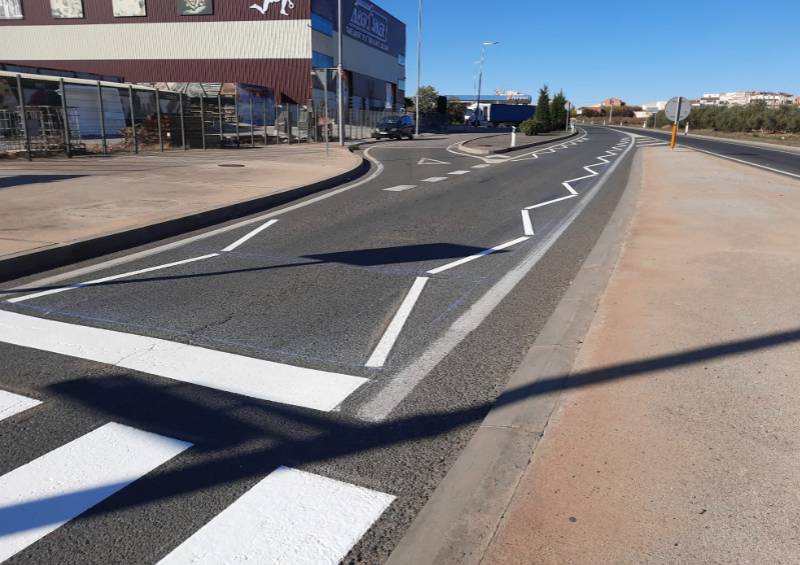
To be listed on the haciendadelalamo TODAY MAP please call +34 968 018 268.
article_detail
Date Published: 07/09/2023
Dragon teeth: what are these new signs on Spanish roads?
These signals have been in place since 2001 in Spain but most drivers still don’t know what they mean

The wonderful world of traffic rules is constantly evolving in Spain and it’s often hard to keep up with the regulations implemented by the General Directorate of Traffic (DGT). Of course, the purpose of installing new signs and signals is to protect drivers, pedestrians and other users and to make the Spanish road and street network a safer place for everyone.
This is how the new ‘dragon tooth’ signs came into play, unusual road markings that were actually introduced in September of 2021 but that very few drivers are actually aware of.
These signals have a double objective in fact, but their primary aim is to warn motorists they are approaching a section of road where special attention must be paid.
Dragon teeth are painted on either side of a lane and consist of a series of triangles pointing inwards towards a section of road. But what do these symbols, which the DGT has been drawing on Spanish streets for almost two years, actually mean?
The warning that dragon teeth signs convey
Hemos pintado marcas viales con borde quebrado y tipo “diente de dragón” en tramos previos a pasos de peatones en la travesía de la N-232 en Torrefarrera (Lleida).#DGCarreteras pic.twitter.com/VvulzAcMSR
— Ministerio Transportes, Movilidad y A. Urbana (@mitmagob) November 19, 2021
These new markings indicate that, just ahead, there is a section of the road where you must slow down, as in the case of a zebra crossing.
These geometric symbols must be separated from each other by a distance of 1.5 metres, while the edge that borders the lane line itself must measure exactly 75 centimetres. In addition, they must appear on the road 30 meters before the 'critical' point is reached, at which point speed must be drastically reduced.
The second function of the dragon tooth signs is more technical and is all to do with driver perspective. Because of their design, with the triangles pointing into the lane, the signs give motorists the impression that the road is much narrower than it actually is, automatically prompting them to slow down.
Broken edge lines
In addition to the dragon teeth, the DGT also introduced the so-called 'broken edge lines' , which fulfill a very similar function. These white zigzag signs are painted on the outer sides of the lanes and indicate that drivers are approaching a zebra crossing and should immediately reduce their speed.
Find all the latest motoring and transport news here or join our Driving in Spain Facebook group for regular updates
Image: Ministry of Transport, Mobility and Urban Agenda
Loading
Sign up for the Spanish News Today Editors Roundup Weekly Bulletin and get an email with all the week’s news straight to your inbox
Special offer: Subscribe now for 25% off (36.95 euros for 48 Bulletins)
OR
you can sign up to our FREE weekly roundup!
Read some of our recent bulletins:
Discount Special Offer subscription:
36.95€ for 48 Editor’s Weekly News Roundup bulletins!
Please CLICK THE BUTTON to subscribe.
(List price 3 months 12 Bulletins)
Read more stories from around Spain:
Contact Murcia Today: Editorial 000 000 000 /
Office 000 000 000

















